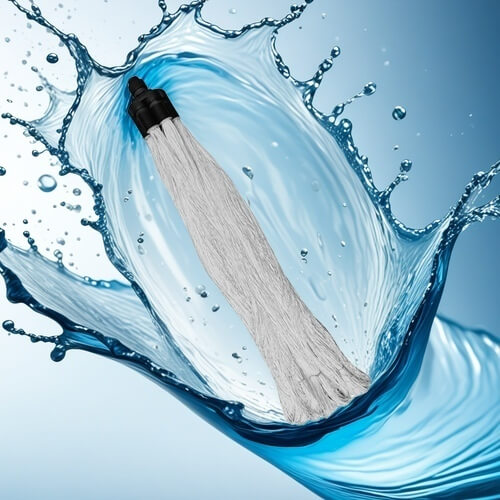Analysis of the sources and characteristics of chemical fiber wastewater
Chemical fiber wastewater refers to various wastewaters generated in the production process of chemical fibers, mainly including wastewater generated in the production process of polyester (PET), polyethylene terephthalate (PTA), viscose, etc. These wastewaters have complex components, contain a variety of toxic substances and pollutants, and are difficult to treat.
Source
The sources of chemical fiber wastewater mainly include the following aspects:
Production process: In the production process of chemical fibers, multiple links are involved, such as esterification, polycondensation, spinning, etc., and each link will produce different types of wastewater. For example, polyester production produces esterification stripping wastewater and polycondensation vacuum injection water
Cleaning process: Equipment and products need to be cleaned after production, and this process will also produce a large amount of flushing wastewater, which usually contains high concentrations of harmful substances
Raw material processing: During the transportation and storage of raw materials, leakage or loss may occur, which will also lead to the generation of wastewater

Characteristics
Chemical fiber wastewater has the following significant characteristics:
Complex composition: Chemical fiber wastewater usually contains strong acids, strong alkalis, organic solvents, cellulose and its derivatives and other components. For example, the main pollutants in PET wastewater include ethylene glycol, terephthalic acid and its derivatives, while PTA wastewater contains benzoic acid, acetic acid, etc.
High organic content: The chemical oxygen demand (COD) of these wastewaters is generally between 1000 and 10000 mg/L, sometimes even higher, indicating that its organic concentration is very high
Poor biodegradability: Chemical fiber wastewater usually has poor biodegradability, and its biological oxygen demand to chemical oxygen demand ratio (BOD/COD) is generally less than 0.25, which makes it difficult for traditional biological treatment methods to effectively remove pollutants
High toxicity: Because it contains a variety of toxic substances, such as aldehydes, cyanides and benzene, these components are toxic to microorganisms, further increasing the difficulty of treatment
Treatment process
For the treatment of chemical fiber wastewater, a comprehensive treatment process based on biological methods is generally adopted, including the following steps:
pH adjustment: Since chemical fiber wastewater is usually acidic or alkaline, it needs to be neutralized first to make its pH value reach the neutral range.
Pretreatment: Remove suspended solids (SS) and oily substances, usually by flotation, coagulation and sedimentation to improve the feasibility of subsequent biological treatment.
Biological treatment: Remove most organic pollutants through technologies such as activated sludge process or membrane bioreactor.
Deep treatment: Such as activated carbon adsorption, sand filtration, etc., to meet higher emission standards or reuse requirements
In summary, chemical fiber wastewater not only has a wide range of sources and complex components, but also poses a serious threat to the environment. Therefore, effective treatment measures need to be taken to reduce its impact on the ecosystem and human health.
